Thoriyari village pond is a place to visit, a great learning resource to understand water structures and its dynamics in the are. Thoriyari is between big Rann and small Rann of Kutch, on the edge closer to the small Rann in Rapar Taluka of Kutch District. It’s a dry and saline place. I came here while working with Samerth Charitable Trust, on my quest to find the state of ponds in this area and to understand how local communities interact with them.
Water is a scarce resource in the region, sought since thousands of years when Rann had turned saline. What is so special about this pond? Let’s find out!
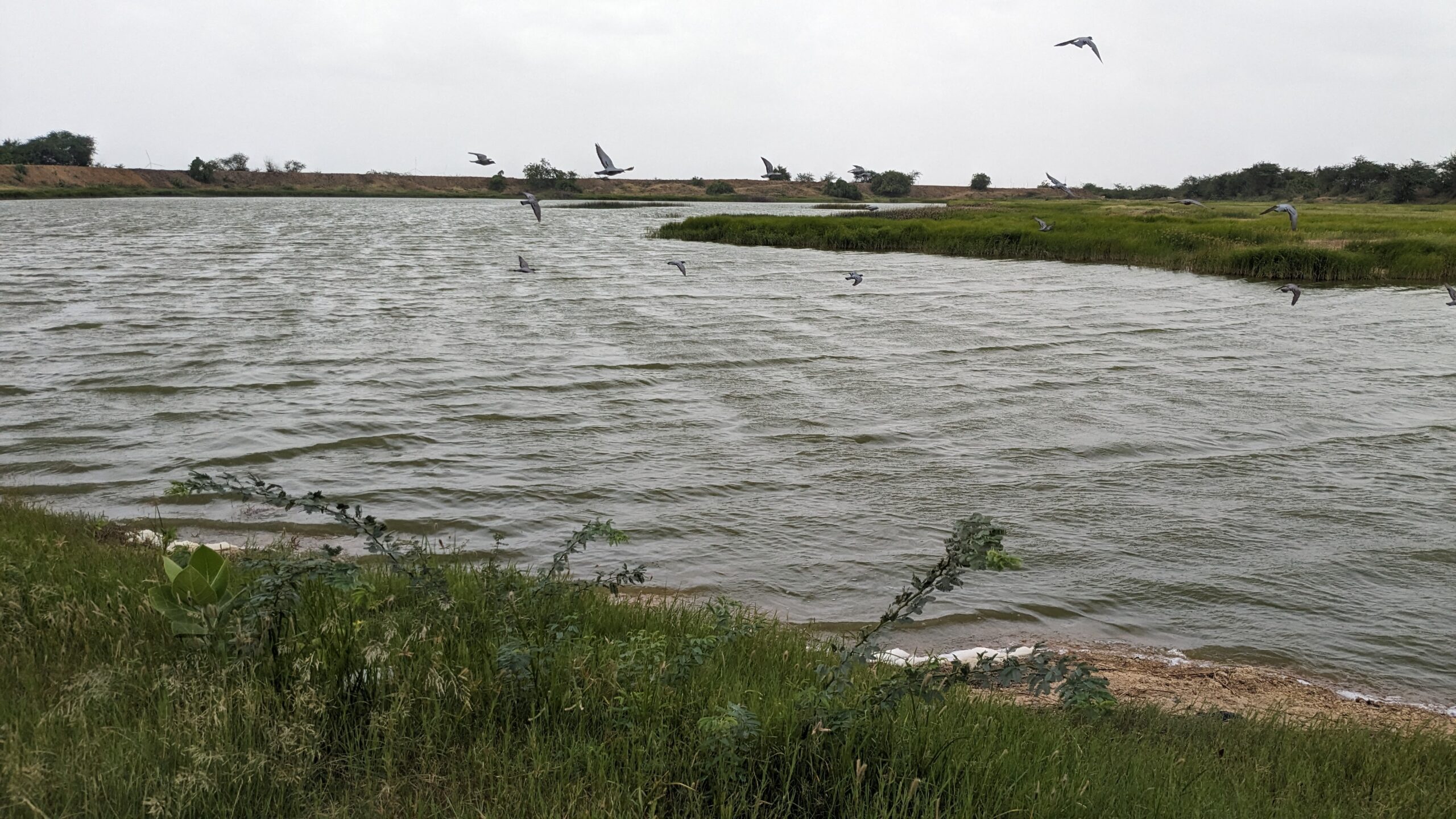
Two Rules Of The Pond
- Washing clothes is prohibited nearby. In order to avoid pollution and misuse of the natural water, the villagers decided on keeping the pond free from chemicals and domestic sewage.
- No trees are to be planted at the bank, near the steps. This is to make sure that no one loiters at the bank and possibly make women feel unsafe or uncomfortable when they come to fetch water.
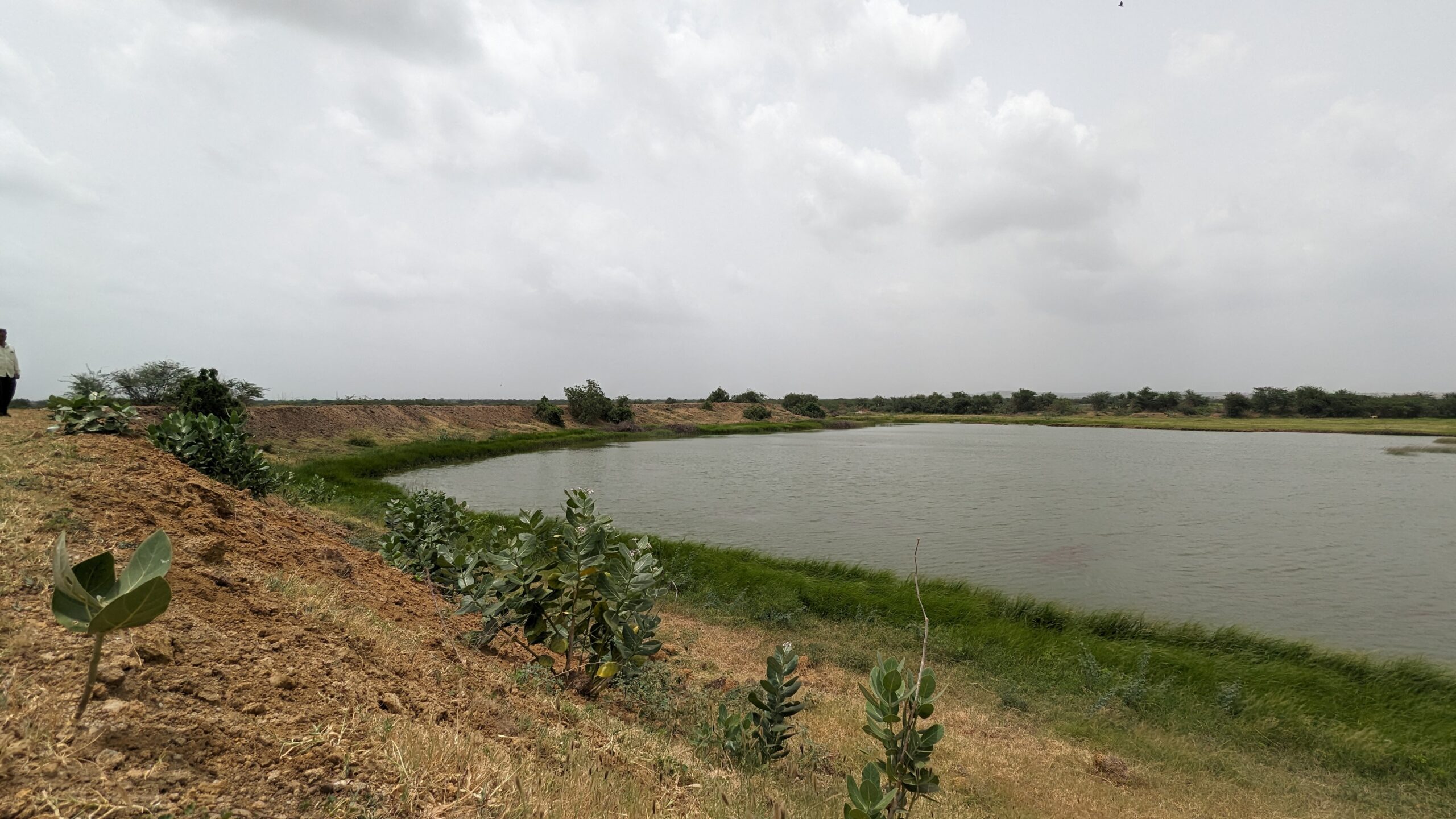
Different Parts Of The Pond
A pond is a complex structure. Hardly anyone takes notice of catchment area, mouth, waste weir, and embankments when they talk about it. Here’s what each one of it means:
- Catchment area: It is all the area of land that aids in collection of water which flows into the pond, many times the size of it.
- Mouth of the pond: If you spend a good amount of time near a pond, you will realize it has a mouth where the majority of the water from catchment area enters. The point from where the water goes in.
- Waste weir: An overflow and damage protection structure. The holding capacity of the pond is fixed. Any more water than the limit could be damaging to the surroundings. Waste weir allows the excess water to flow through without any damage in the embankments. Generally, this overflow is directed towards fields and doubles down as agricultural benefit.
- Embankments: These are wall-like raised platforms on all sides of a pond. They start small but become bigger due to desiltation (removing accumulated soil from the bottom) and deepening of pond over the years. They keep it intact.
A pond needs maintenance since it is not a flowing structure. One needs to desilt it every 2-3 years. Strict usage behavior and communal cooperation is the key to the life of a pond. Otherwise it might turn into a bane, resulting in the death of the village.
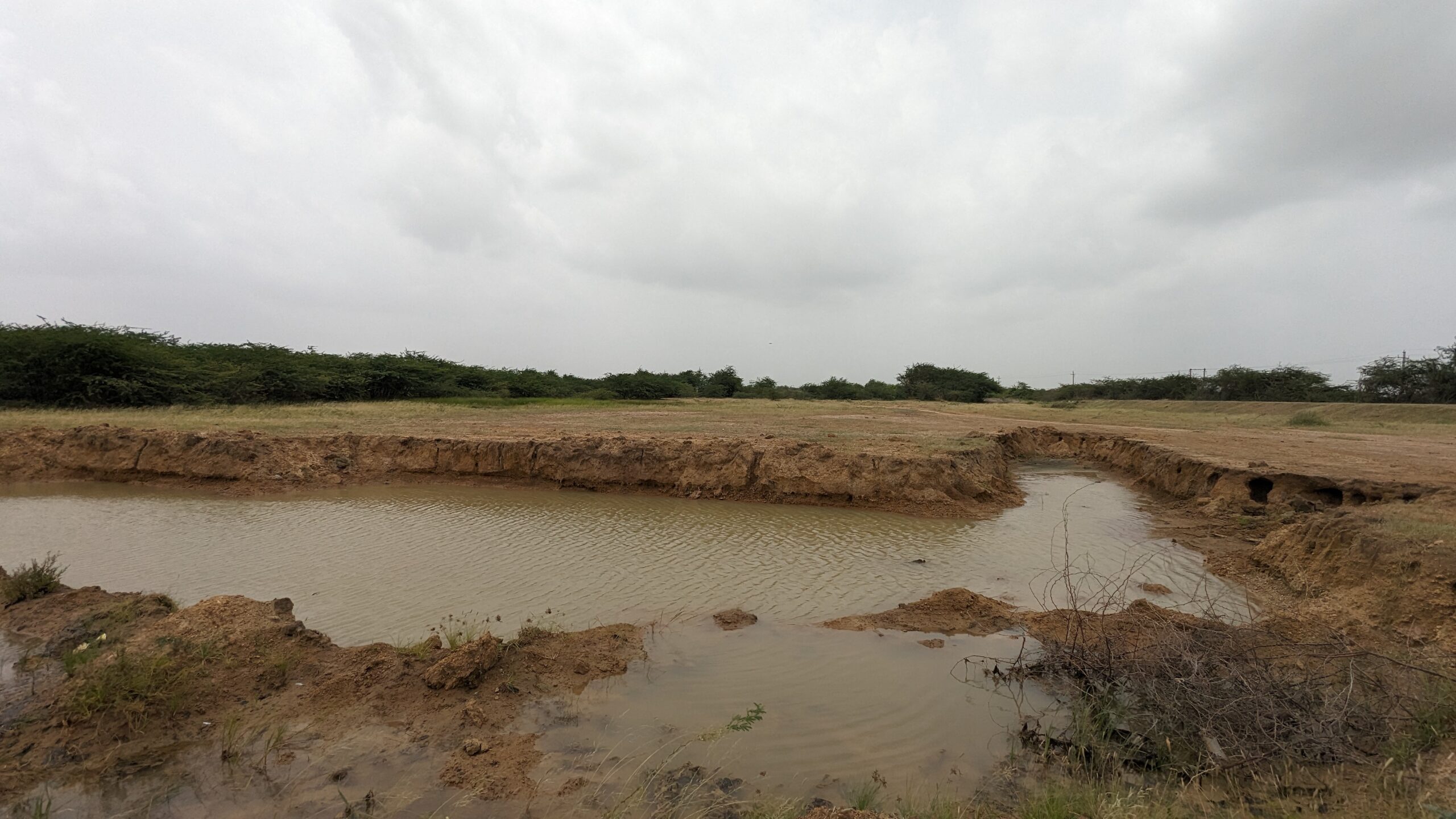
Soil excavated from the pond is used in agricultural land as replenishment. This picture is from one of the edges from where the soil is taken in the Thoriyari pond.
Mouth of the pond
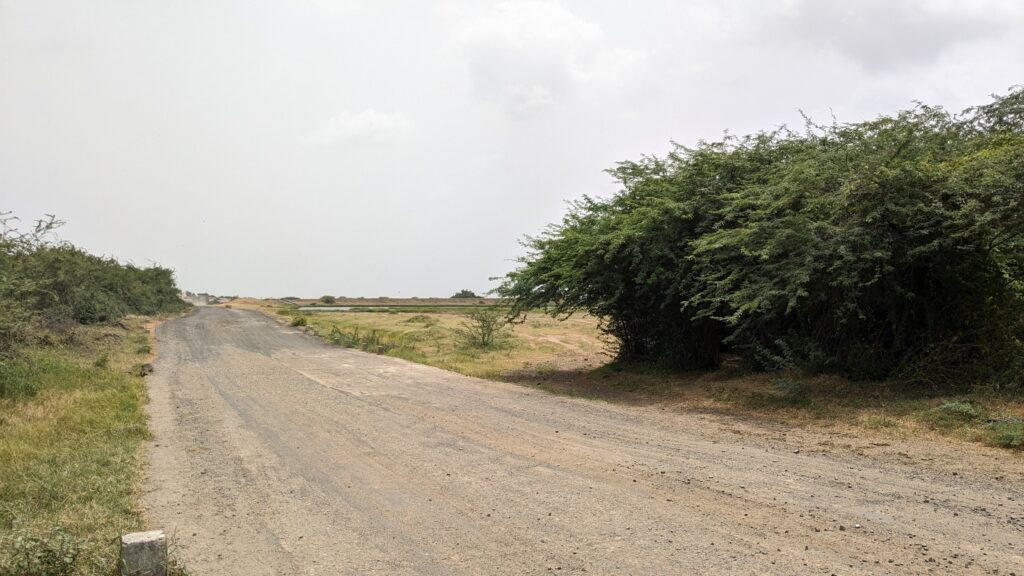
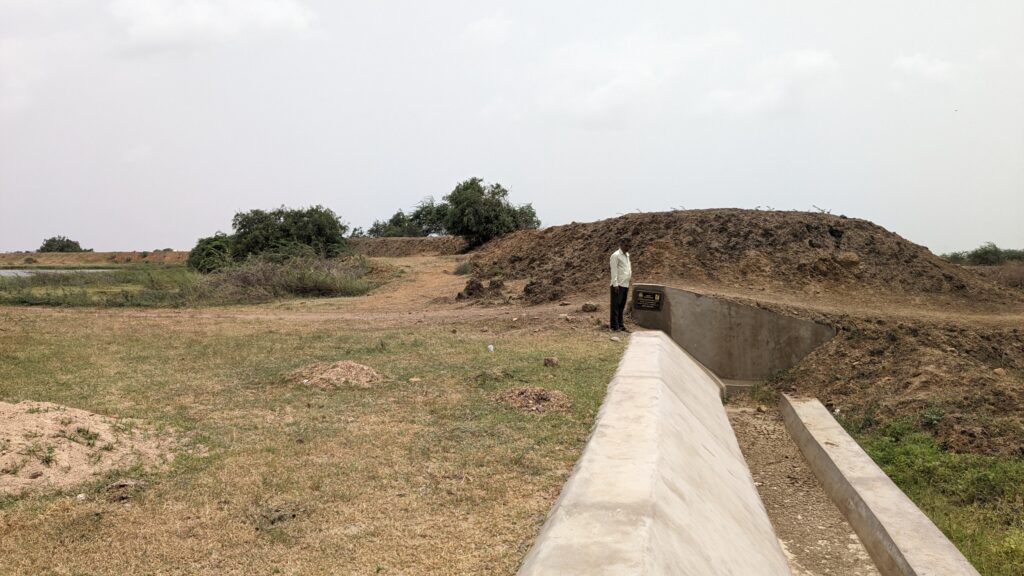
Waste weir and strengthened bund in the back.
The entire catchment landscape!
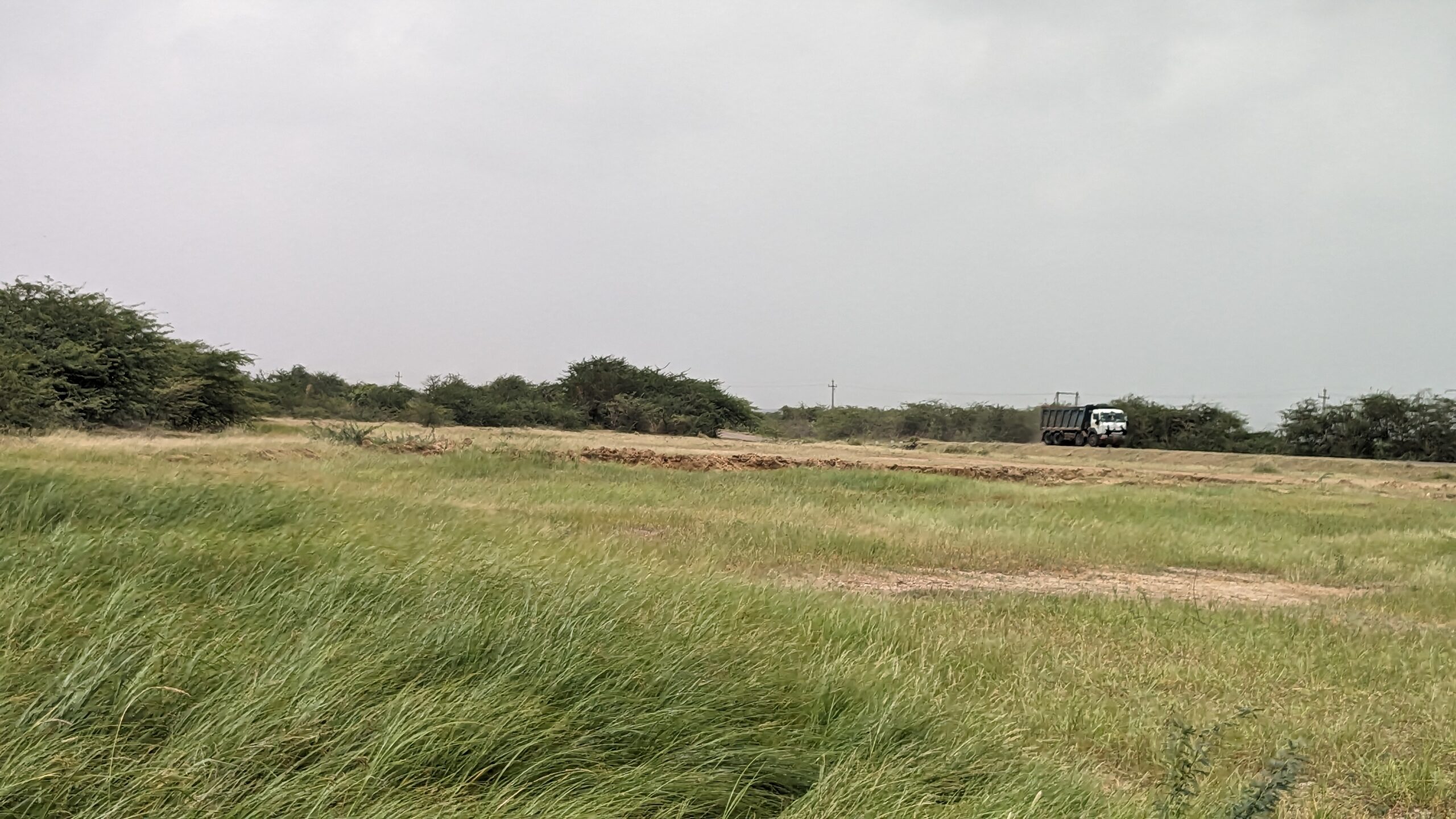
Bhimagyaras, A Tradition Coming To A Halt
On every Aashad ekadashi (11th lunar day of the 4th month in Vedic calendar, falls in June/July as per the Gregorian calendar), everyone in the village turns up to do shram-daan (voluntary labour). Everyone gathers at sunrise and spends a couple of hours cleaning, weeding, clearing shrubs, levelling or raising banks, thorn fencing, and maintaining waste weir area. They take up all the activities that are possible to do on a collective human scale. This tradition is known as Bhimagyaras and it is slowly dying.
Around two decades ago, almost all the villages in Rapar started disassociating themselves with this practice. The reason quoted is that people began losing a sense of unity and started pursuing individual interests over common good. Is that because of urbanisation or growing distrust or poor governance or the Bhuj earthquake? I can’t put a finger on any one of these. It seems to be a combination of multiple reasons that led to this communal apathy towards ponds.
One interesting observation is that the timeline of disassociation starts with the earthquake or at least it magnifies around that time when people take about it today. Can it be completely attributed to that? I’m not sure. Local people do refer to Bhuj earthquake as a reference point for multiple things, time and again. Today, one can count on their fingers the number of villages that follow Bhimagyaras tradition.
Samerth, the organization I’m working with, is functioning here since almost three decades now. This pond has also avoided collapse because of Samerth’s interventions. The organization facilitated desilting process in the year 2018-19, and waste weir work and removal of Ganda Baavad (Prosopis Juliflora) plant in 2022-23. Ponds are enclosed structures unlike a river. Hence, mud starts to pile up. If the pond is not desilted, it becomes a trove of diseases and pollution.
Prosopis Juliflora is an invading foreign species which has taken over the entire landscape of Kutch. This plant takes up the essential carbon from the soil and does not allow native species to grow. Sustaining existing support systems is an important part of sustaining development and this pond is one such system.
Leisure At The Village Pond
A communal activity can also be leisurely. People turn up at the pond the day after it overflows. They spend the entire afternoon hanging out at the banks, engaging in picnics and chitchats. One can find kids tumbling, women and men talking about seemingly important nothings. Leisure in the rural settings is a less observed and even lesser documented phenomenon. Communal leisure is fast vanishing along with the disappearing practice of Bhimagyaras.
A coconut competition happens on this day. It’s not about eating coconut or hitting each other with it. This is a fetching sport. A village elder challenges all the contenders for a prize of 500 rupees or more. They ask the fastest and strongest to fetch the coconut thrown into the pond. It’s a mixed event sport which tests swimming, climbing and diving capabilities of the village youth. In my opinion, it can become a part of Olympics. It was a regular sight a few years ago, but is now a rare occurrence.
The next time you come across a pond in a village, do ask a passerby about the stories that it holds!
References
- Aaj bhi khare hain talaab, Anupam Mishra (The book)
- MGNREGA operational guidelines




Good work samerth team and all leaders congratulations those are tribally ariya working ariya.
So all the best 👌👌👌👌